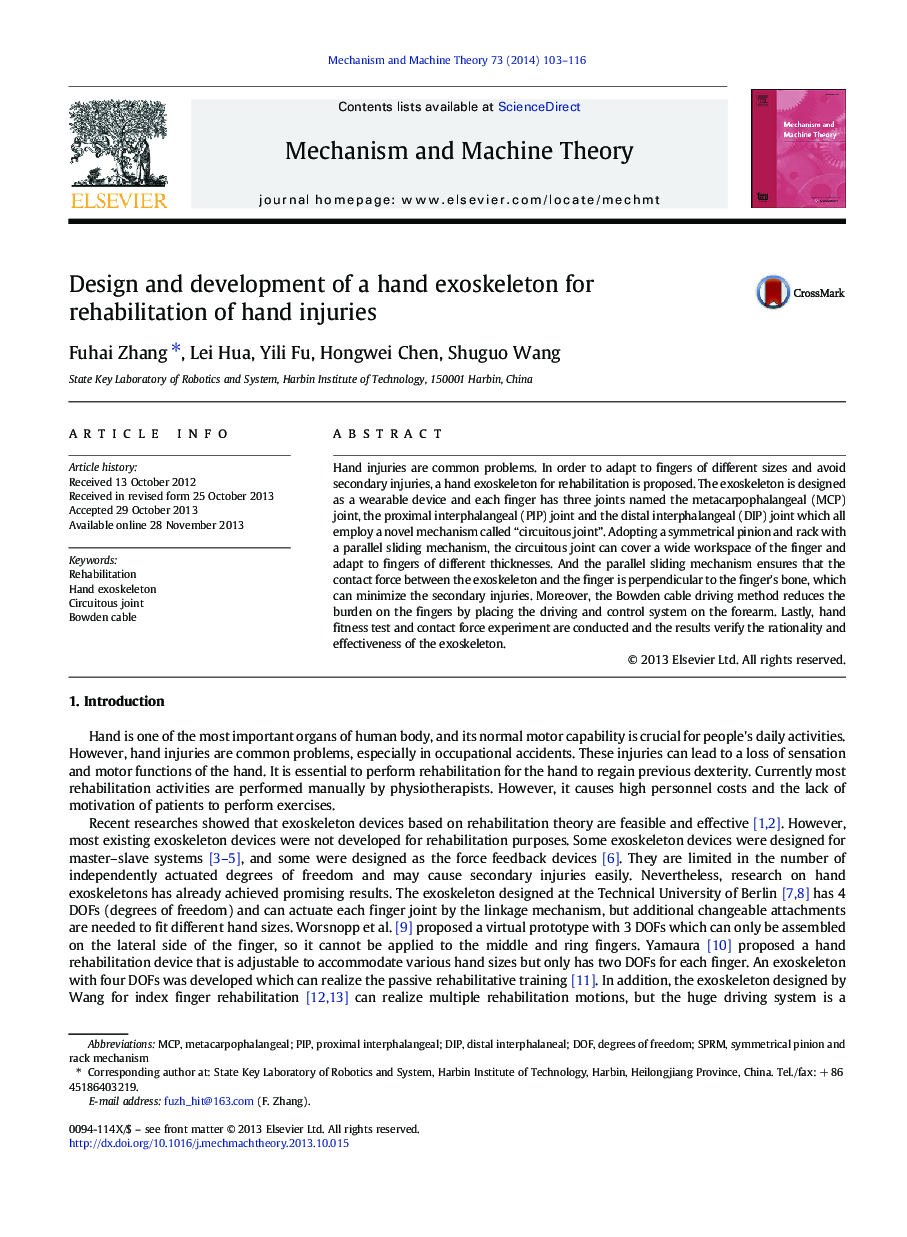| Article ID | Journal | Published Year | Pages | File Type |
|---|---|---|---|---|
| 7180225 | Mechanism and Machine Theory | 2014 | 14 Pages |
Abstract
Hand injuries are common problems. In order to adapt to fingers of different sizes and avoid secondary injuries, a hand exoskeleton for rehabilitation is proposed. The exoskeleton is designed as a wearable device and each finger has three joints named the metacarpophalangeal (MCP) joint, the proximal interphalangeal (PIP) joint and the distal interphalangeal (DIP) joint which all employ a novel mechanism called “circuitous joint”. Adopting a symmetrical pinion and rack with a parallel sliding mechanism, the circuitous joint can cover a wide workspace of the finger and adapt to fingers of different thicknesses. And the parallel sliding mechanism ensures that the contact force between the exoskeleton and the finger is perpendicular to the finger's bone, which can minimize the secondary injuries. Moreover, the Bowden cable driving method reduces the burden on the fingers by placing the driving and control system on the forearm. Lastly, hand fitness test and contact force experiment are conducted and the results verify the rationality and effectiveness of the exoskeleton.
Keywords
Related Topics
Physical Sciences and Engineering
Engineering
Industrial and Manufacturing Engineering
Authors
Fuhai Zhang, Lei Hua, Yili Fu, Hongwei Chen, Shuguo Wang,
